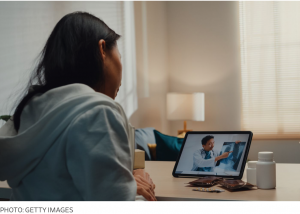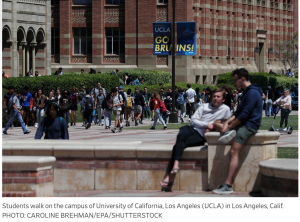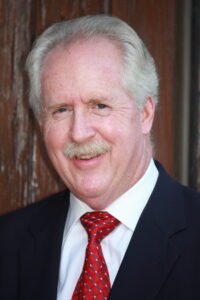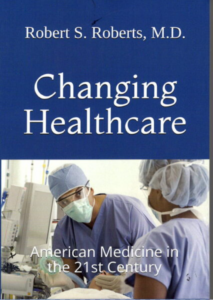People often brag that they have “great healthcare insurance.” It is often the most important benefit employers can use to attract new employees. This can be very comforting to people who are concerned about their health and their future. But good healthcare insurance is not an end in itself; it is a means to an end. If the end never comes, what good is it?
There is reason to be skeptical of focusing too much on healthcare insurance instead of the quality of the health care delivered. John C. Goodman, writing for The Independent Institute at independent.org, says, “One reason the United States spends more on health care than other countries is that we are obsessive about health insurance instead of health care. When the British National Health Service or the Canadian Medicare system spends additional money, they spend it employing doctors, building hospitals or buying medical equipment. When the U.S. government spends more money, we give it to insurance companies.”
He cites ObamaCare as an example. According to Goodman, we are currently spending $214 billion a year insuring people through Medicaid (which is mostly contracted out to private insurers) and the Obamacare exchanges. At $1,731 for every household in America, that’s a great deal of money being transferred from taxpayers to insurance companies every year.
It is clear that insurance companies, and hospitals, are benefitting most from ObamaCare. You need only notice the size of their buildings in any downtown metropolitan community. But what about the American people? Are they getting the access to healthcare and the measurable improvements in their health that ObamaCare was supposed to deliver?
Nonetheless, one scholarly study finds there has been no overall increase in health care in the US since the enactment of Obamacare. The number of doctor visits per capita actually fell over the last decade. That’s surprising, because our population has been aging and older people require more health care.
Unfortunately, there is nothing particularly new here. When Obamacare was enacted, it was expected to cost close to $1 trillion over the next ten years. But there was no serious discussion of what we were going to buy with all that spending—not in Congress, not in the mainstream media, or even in the health policy community.
Goodman explains that Economics 101 teaches that all societies face a production possibility frontier. The typical textbook example is the choice between guns (military goods) and butter (consumer goods). In our case, it is health care versus other goods and services. To have more of one, you have to have less of the other. To have more health care, we have to have more doctors, more nurses, more hospital beds, etc. Without any increase in supply, for one group of people to get more care, some other group has to get less.
We saw a vivid illustration of that during the Covid pandemic. In order to tend to the needs of a sudden surge in Covid patients, health care providers had to delay care for the non-Covid patients. That has led to many more undiagnosed cases of cancer, heart disease, diabetes, and other chronic, life-threatening illnesses. The quality of their healthcare insurance didn’t change – but the quality of their health care deteriorated.
History tells us what happens when the healthcare delivery system doesn’t adapt to increased demand. Medicare for the elderly and Medicaid for the poor were huge programs, even when they were started in 1965. In a short period of time the number of people who lacked health insurance dropped from nearly 25 percent to under 15 percent of the population.
As a result, physician visits by low-income people increased 6.2% and surgical procedures among the elderly increased 14.7%. But since there was no increase in the ability of the system to supply medical services, these increases were offset by a decrease in care delivered to the non-poor and the non-elderly.
A study in the American Journal of Public Health found that “society-wide utilization of medical care remained unchanged.” Even though there was an increase in health care services for seniors, MIT professor Amy Finkelstein discovered that the passage of Medicare had no effect on the health of the elderly—at least as measured by mortality. The additional spending set off a bout of health care inflation for all patients, however.
You would hope that Washington politicians would have learned something from this experience. Sadly, there is little evidence of that. During the first term of the Clinton Administration, Hillary Clinton proposed a plan to reform the private health care system and insure the remaining uninsured. But although that proposal consumed thousands of pages of analysis and discussion, almost no one asked what the nation would have less of in order to have more health care. And nothing was done to increase the supply of doctors and nurses!
Has ObamaCare increased the delivery of health care?
Under Obamacare, the number of people without health insurance fell from 15.5 percent of the population in 2010 to 7.9 percent by 2022. Sounds good, huh? Yet the study cited above found that health care utilization across all of society did not increase at all! There was some shifting, as low-income patients got more care, but that care was offset by reductions elsewhere in the system. In particular, “a 3.5-percentage-point increase in the proportion of persons earning less than or equal to 138% of the federal poverty level with at least 1 office visit was offset by small, nonsignificant reductions among the rest of the population.”
It is clear we must focus more on the delivery of healthcare, rather than the insurance of healthcare, if we want to improve the health of all Americans. That is the goal, isn’t it?




